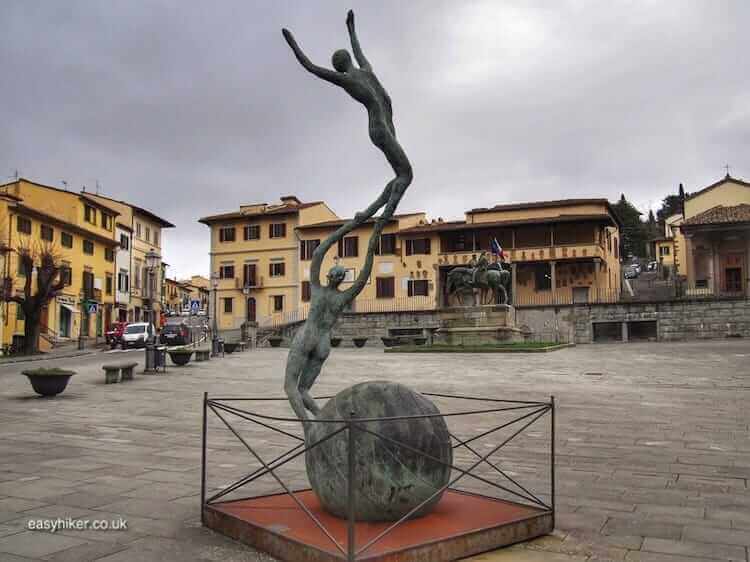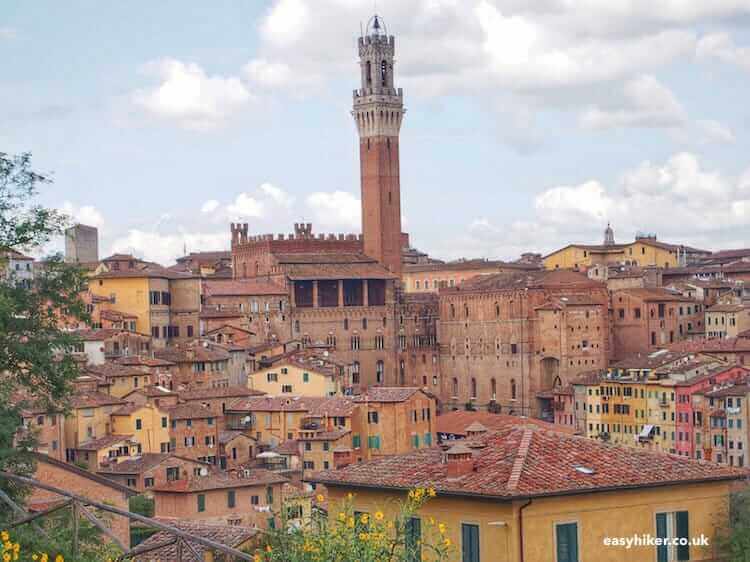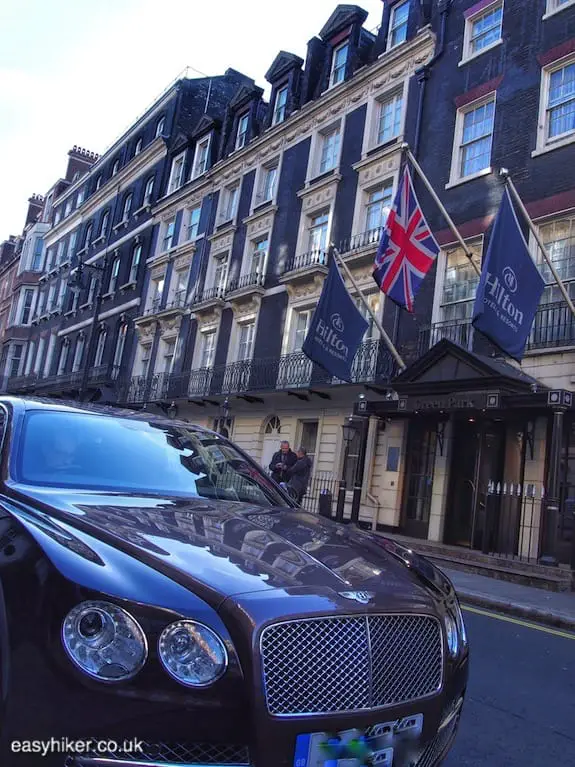After the 12th century hydraulic engineer Alberto Pitentino had surrounded Mantua with a network of artificial lakes on three sides, he went on to complete the ring of water around the old town by adding a canal in the south, providing merchants and traders with both a fresh water resource and a cross-town transport route.
Today, this waterway – called the “Rio” – is the one place in town that instantly brings to mind images of neighbouring Venice. The Rio, for all intents and purposes, is Mantua’s Canale Grande.

Exploring the Rio is one major pleasure of a visit to Mantua but comes with its own set of rules. One is that you cannot simply take a stroll on the banks of the canal.
On its cross-town route from Lago Superiore to Lago Inferiore, the Canale Grande flows (slowly, down a slope of 3 metres in total) past the backyards of residential homes and, occasionally, under the concrete cover of modern buildings.
You can only follow its course on adjacent streets and wait till it suddenly reappears, like a vision of Brigadoon.

There are, over the Rio’s length of just over 1 km, only a handful of town squares and bridges where the canal picturesquely emerges before disappearing again in the canyon of ancient buildings.
These are always grand operatic moments: your map (you will need to bring one for this walk) may have told you where to look, but not what exactly to expect. So there is always an element of surprise …
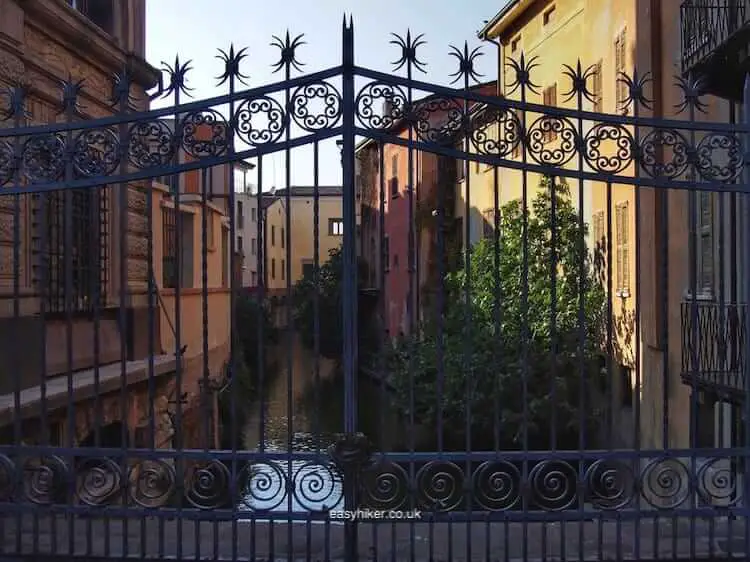
… and you will be intrigued every time by the contrast between the hurly-burly of the modern town and the “unravish’d bride of quietness” that still cuts across town without a noise as it has done for nearly 900 years.
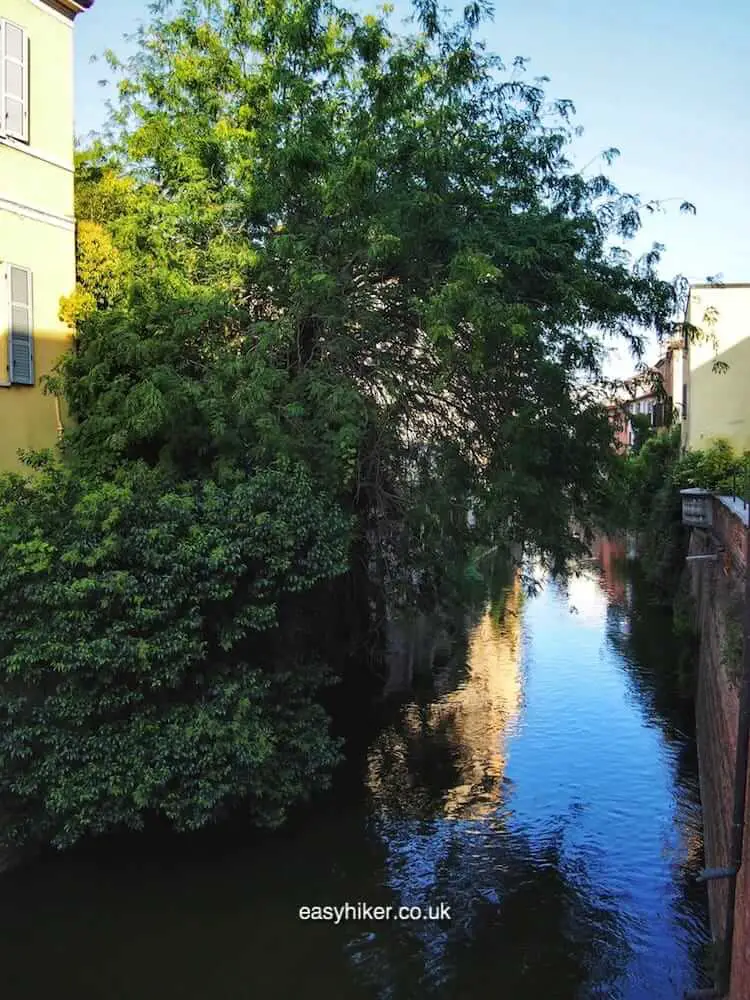
Start the walk in the west near the source of the Rio just south of the old Franciscan convent at Piazza San Francesco d’Assisi. In the distance, you can see where water is drawn in from Lago Superiore.
Continue to Piazza Felice Cavalotti …
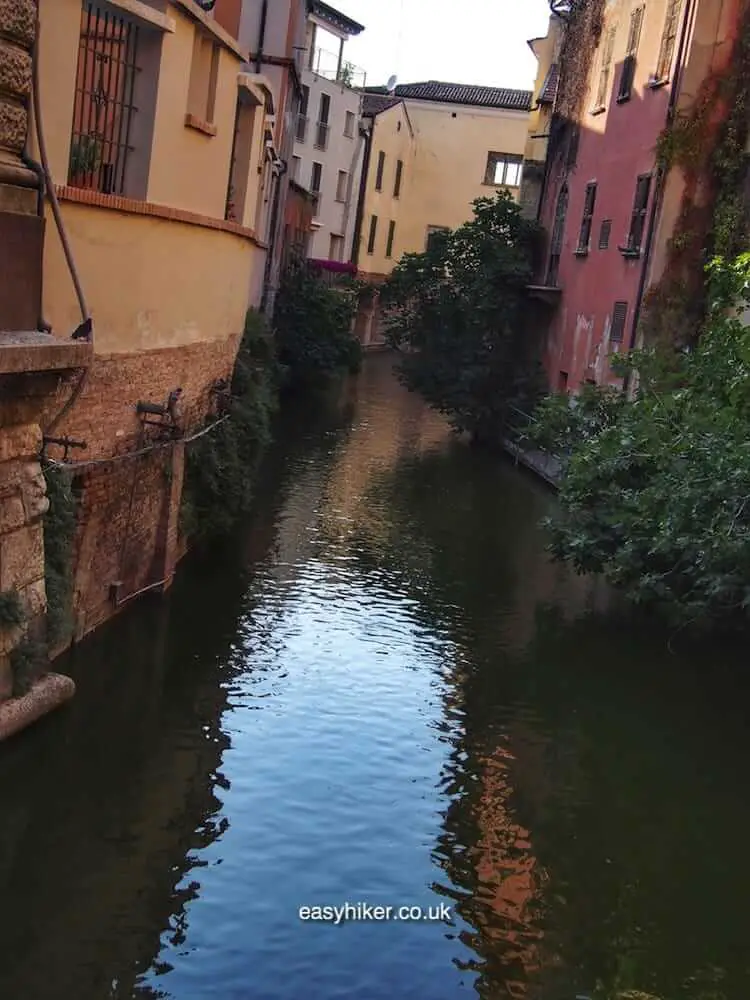
… where the Rio disappears underground for a while before re-emerging on Piazza Martiri di Belfiore.
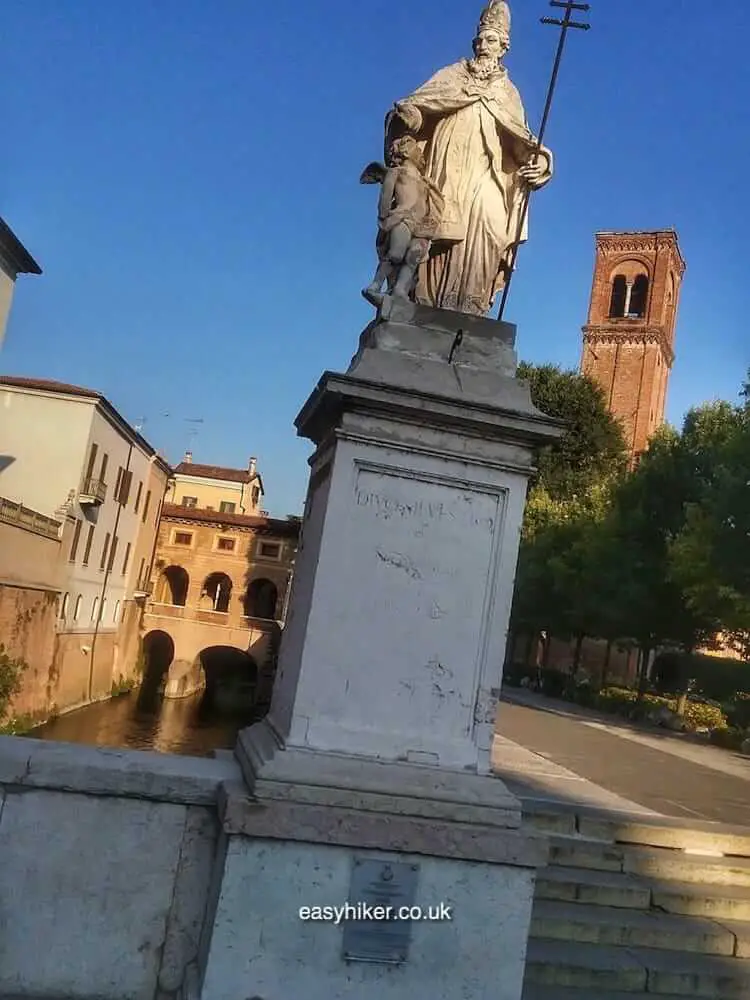
For much of the Rio’s existence, this midtown piazza served as the canal’s main unloading port. It also featured Mantua’s slaughterhouse (demolished in 1800) and covered fish market (still standing on the far side of the church), both businesses that required access to a transport network and to fresh water.
They also needed mooring and storage facilities that were eventually added to the Rio in the 16th century. Access from street level was provided through a system of stairs and hatches.
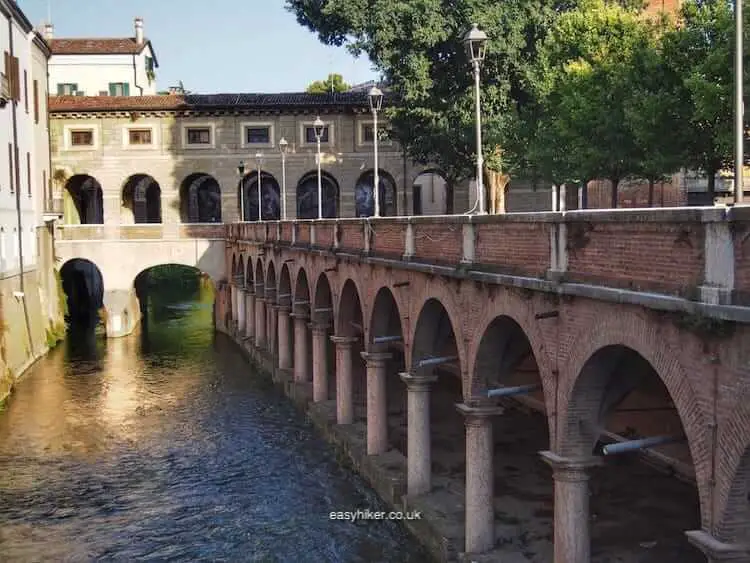
Continue to Via Massari which features a medieval bridge across the Rio. Do not miss the brief excursion to Vicolo Sottovia, which is the only place along the route where you can walk – albeit briefly – directly alongside the canal.
Sit down on one of the benches and take a breather.
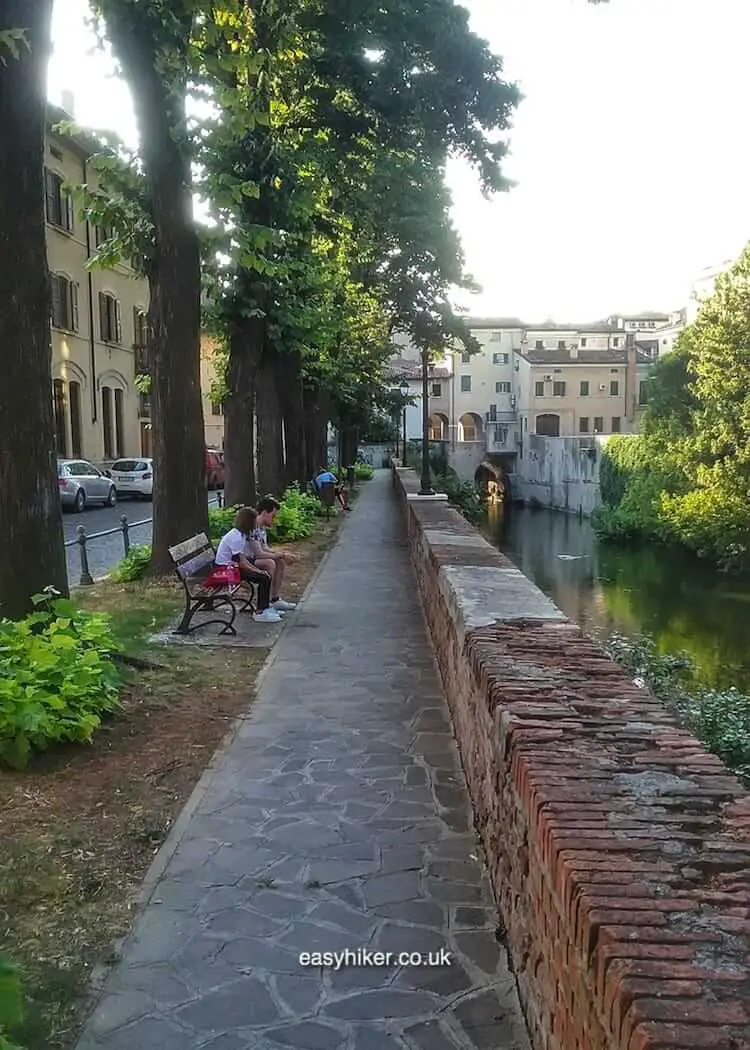
The Rio ends at Porto Catena, a major trans-shipment port throughout the Middle Ages: this is where freight arrived from the surrounding countryside and where it was reloaded onto smaller boats that could enter the canal.
Today, Porto Catena is half marina, half industrial heritage park.
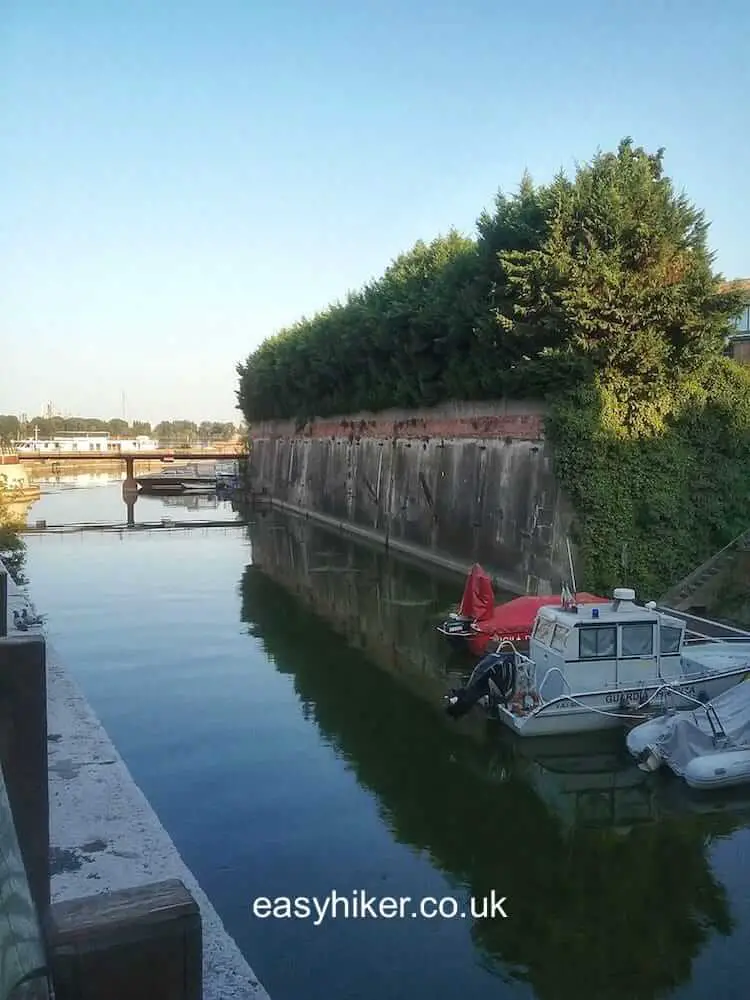
As always with city walks, much of the fun comes from making incidental discoveries. Near the ancient fish market (the pescherie), we spotted this muscular work of street art, a mix between Goya and Michelangelo, only to find out later that the motive was lifted from the decoration of the Chamber of Giants in the Palazzo Té where the Gonzaga family resided, the town’s feudal overlords.

And near-by, there is this beautiful garden, inviting you to sit down for a moment and take a brief rest.

Much of the fun also comes from the detective work that is needed to follow the Rio’s course. This is an easy job – you do not need to be an ace sleuth to catch up with the Rio on its way (provided you have a map).
It is also immensely rewarding. Each intersection of the Rio and the modern town centre allows you to peek into a different world, a world with rules, customs and certainties that we no longer understand.
The Rio may flow through Mantua from one lake to another, but it is also flowing from through time.


